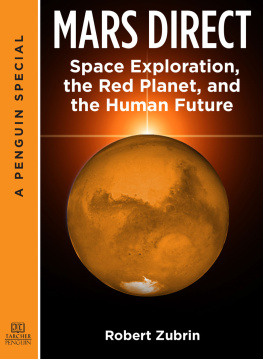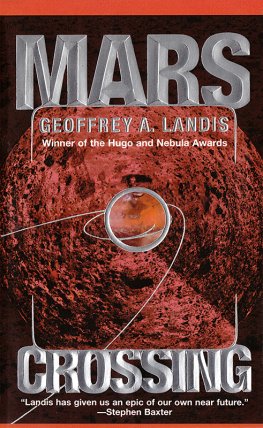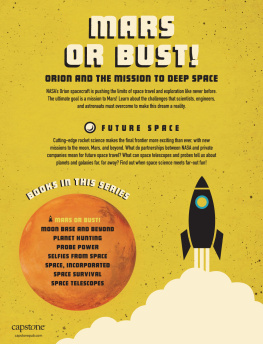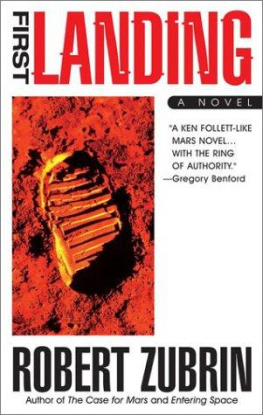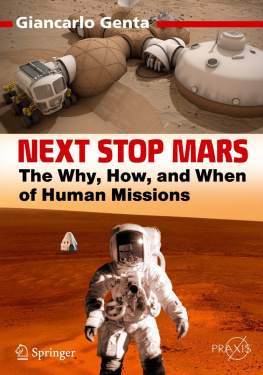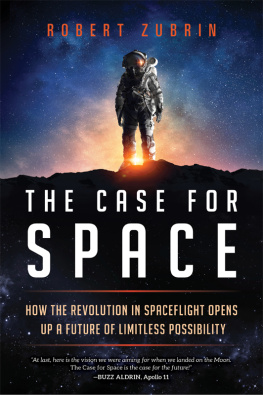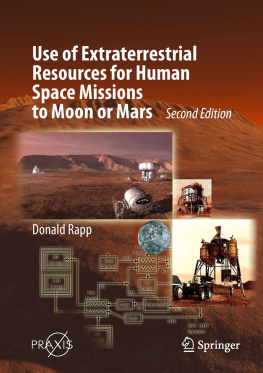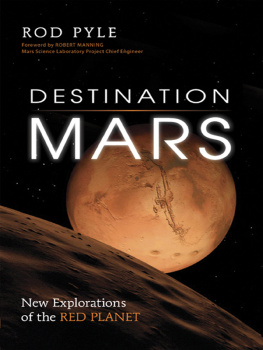Mars Direct
Space Exploration, the Red Planet, and the Human Future
by Robert Zubrin
J EREMY P. T ARCHER /P ENGUIN
a member of Penguin Group (USA) Inc.
New York
JEREMY P. TARCHER/PENGUIN
Published by the Penguin Group
Penguin Group (USA) Inc., 375 Hudson Street, New York, New York 10014, USA
[insert penguin logo]
USA / Canada / UK / Ireland / Australia / New Zealand / India / South Africa / China
Penguin Books Ltd, Registered Offices: 80 Strand, London WC2R 0RL, England
For more information about the Penguin Group visit penguin.com
Copyright 2013 by Robert Zubrin
All rights reserved. No part of this book may be reproduced, scanned, or distributed in any printed or electronic form without permission. Please do not participate in or encourage piracy of copyrighted materials in violation of the authors rights. Purchase only authorized editions. Published simultaneously in Canada
Most Tarcher/Penguin books are available at special quantity discounts for bulk purchase for sales promotions, premiums, fund-raising, and educational needs. Special books or book excerpts also can be created to fit specific needs. For details, write Penguin Group (USA) Inc. Special Markets, 375 Hudson Street, New York, NY 10014.
Library of Congress Cataloging-in-Publication Data TK
While the author has made every effort to provide accurate telephone numbers and Internet addresses at the time of publication, neither the publisher nor the author assumes any responsibility for errors, or for changes that occur after publication. Further, the publisher does not have any control over and does not assume any responsibility for author or third-party websites or their content.
Penguin is committed to publishing works of quality and integrity. In that spirit, we are proud to offer this book to our readers; however, the story, the experiences, and the words are the authors alone.
C ONTENTS
There are no ends, limits, or walls that can bar us or ban us from the infinite multitude of things.
Giordano Bruno, On the Infinite Universe and Worlds, 1584
When a population of organisms grows in a finite environment, sooner or later it will encounter a resource limit. This phenomenon, described by ecologists as reaching the carrying capacity of the environment, applies to bacteria on a culture dish, to fruit flies in a jar of agar, and to buffalo on a prairie. It must also apply to man on this finite planet.
John P. Holdren and Paul R. Ehrlich, Global Ecology, 1971
Part 1:
The Challenge of Mars
The Earth is not the only world. There are billions of other potential homes for life. And the first of these is now within reach.
The planet Mars is a world of towering mountains, vast deserts, polar ice fields, dry river channels, and spectacular deep canyons. Possessing a surface area equal to all the continents of the Earth put together, it orbits our sun at a distance about 50 percent greater than that of the Earth. This makes Mars a cold world, but not impossibly so. The average sunlight received at the Martian equator is about equal to that which shines upon Norway or Alaska. During the day at low Martian latitudes, the temperature frequently exceeds 50 F (10 C). At night, however, the thin Martian atmosphere does a poor job of retaining heat, and temperatures drop to 130 F (90 C).
There is no liquid water on the surface of Mars today, but there was once, and our satellite probes show us its handiwork in the form of large networks of dried up riverbeds, dry lakes, and even the basin of a now-vacant northern Martian ocean. The water, however, is thereits surface reserves frozen as ice and permafrost and covered with dust, its deeper reservoirs still liquid, warmed by the planets remaining sources of geothermal heat. There is as much water per square mile on Mars as there is on the continents of our home world.
Water is the staff of life, and the presence of large quantities of water on Mars marks it out as a potential home for a biosphere. On Earth, wherever we find liquid water, we find life. The evidence from our orbital images shows that there was liquid water on the surface of Mars for about a billion years of the planets early history, a span roughly ten times as long as it took for life to appear in the Earths fossil record after there was liquid water here. Thus if the conjecture is correct that life is a natural development from chemistry wherever one has liquid water and a sufficient period of time, then life should have appeared on Mars. Fossils recording its history may be there for us to find.
Life may have lost its foothold on the planets surface, with the loss of the juvenile Marss early thick carbon dioxide atmosphere and its associated greenhouse warming capability. But our space probes show that liquid water has gushed out from the Red Planets subsurface within the past few million years, and probably within the past decade. In either case, effectively, the geologic present. This means that refuges for retreating Martian life may still exist. If we go there and drill, we could find them, and in finding them determine whether life as we know it on Earth is the pattern for all life everywhere or whether we are just one example of a much vaster and more varied tapestry. Mars is thus the Rosetta Stone that will reveal to us the nature of life and its place within the cosmic order.
The New World
But Mars is more than just an object of scientific inquiry. It is a world capable of sustaining not only an ancient native microbial ecology, but a new immigrant branch of human civilization. For the Red Planets resources go well beyond its possession of water. It has carbon in abundance as well, present both in the carbon dioxide that composes the majority of its atmosphere and in carbonates in its surface material. It has nitrogen, too; nitrogen is the leading minority gas in Marss air and almost certainly exists as nitrates in the soil as well. Thus between the water, carbon dioxide, and nitrogen, we have all four of the primary elements of life (carbon, nitrogen, oxygen, and hydrogen). Calcium, phosphorus, and sulfurthe key secondary elements of lifeare present in abundance as well. (In contrast, with the exception of oxides bound in rock, or ultra-cold condensations found in permanently shadowed polar craters, all of these are either rare or virtually absent on the Earths Moon.)
In addition, all the elements of industry, such as iron, titanium, nickel, zinc, silicon, aluminum, and copper, are available on Mars, and the planet has had a complex geological history involving volcanism and hydrological action that has allowed for the concentration of geochemical rare elements into usable concentrated mineral ore. Marss day-night cycle is 24.6 hours long, nearly the same as the Earth, which is not only pleasant for humans, but more importantly, makes it fully suitable for growing plants in outdoor greenhouses using natural sunlight. The planets geothermal heat, which currently may sustain the habitats for scientifically fascinating native microbes, can also be used to provide both plentiful liquid water and power for human Mars settlements.
In a way that simply is not true of the Earths Moon, the asteroids, or any other extraterrestrial destination in our solar system, Mars is the New World. If we can go there and develop the craft that allows us to transform its native resources into usable materialstransforming its carbon dioxide and water into fuel and oxygen, using its water and soil and sunlight to grow plants, extracting geothermal power from its subsurface, using its collection of solid resources to produce bricks, ceramics, glasses, plastics, and metals, making our way up the ladder of craftsmanship to make wires, tubes, clothes, tankage, and habitatsthen we can create the technological underpinnings for not only a new branch, but a new

